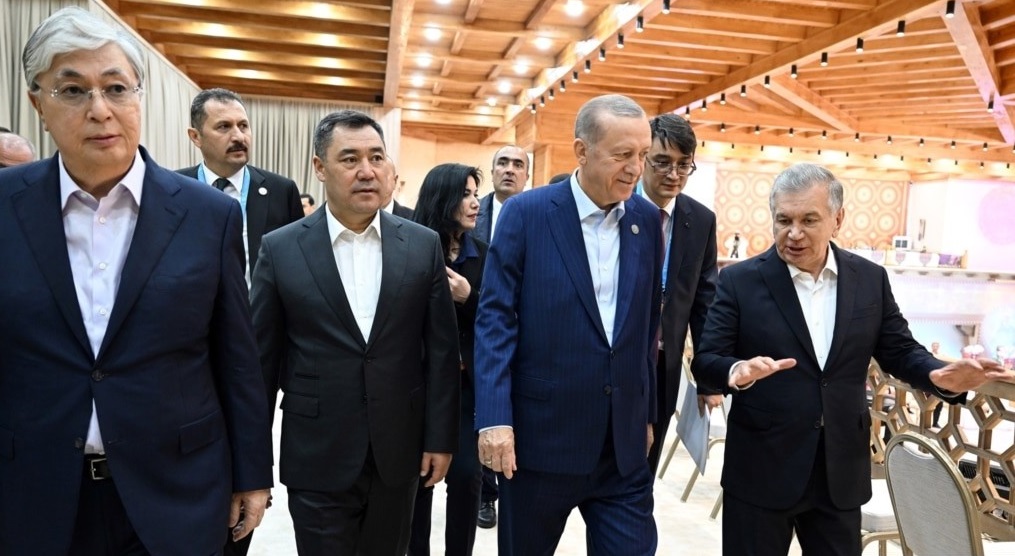Turkestan or Iranzamin: the clash over the cultural roots of Central Asia
Istanbul presses for the strengthening of the ‘Turkic world’, rejecting ‘Eurocentric’ descriptions of the region. But Tajik historian Kamoluddin Abdulloev objects: ‘Iran would have just as many arguments to assert its historical influence. In a land where the phases of Mongol domination and the spread of Islam have led to divisions and recompositions between Shiites and Sunnis.
Dushanbe ( AsiaNews) - The Turkish television channel Trt Haber has reported that the Ministry of National Education in Ankara has ordered that the term ‘Turkestan’ be used in school curricula instead of ‘Central Asia’. The latter is described as a ‘Eurocentric’ definition, which does not reflect the historical and cultural specificities of the region, and the need to restore historical truth by supporting the strengthening of the ‘Turkic world’ is emphasised.
A phrase by President Recep Tayyip Erdogan is recalled, according to which ‘we will work shoulder to shoulder to make the period ahead a Turanian era, spreading our vision of the “Century of Turkey” through the Organisation of Turkic States (Otg)’. An expression of Enver Pasha, the Ottoman commander leading the Young Turk revolution a century ago, is also often quoted: ‘The best of the non-Turks is worth far less than the youngest and most inexperienced of the Turks’.
This insistence on the ‘Turkisation’ of the whole of Central Asia provokes discussion and perplexity in all the states involved, but especially in Tajikistan, the country where the Turkic influence clashes with an even more significant dependence on Persian roots, where many denounce ‘Pan-Turkism’ as a new form of colonisation. In the first post-Soviet two decades, between 1992 and 2010, Turkey's expansionist positions were also opposed by the then president of Uzbekistan, Islam Karimov, as well as by Turkmenistan's desire to jealously preserve its neutrality, so much so that to this day Ašgabat remains only an observer within the TGTO.
The Tajik historian Kamoluddin Abdulloev comments on Radio Ozodi that ‘if the Turks want to call us Turkestan, then Iran could associate us with Afghanistan, and call us Iranzamin, having as many arguments to assert its historical influence on the region’, recalling the eras of Khorasan, ‘Greater Iran’ or Iranshahrom. After all, Iran shares a border with these countries (Turkmenistan and Afghanistan), unlike Turkey. Until the 18th century, Khorasan and Maverannakhr (the Transoxiana, the Central Asian area north of the Oxus River) were considered a single region, distinguishing western Iran from eastern Iran, with a common history and cultural centres such as Isfahan, Herat, Samarkand, Bukhara and Delhi, all the way to China. Iranzamin or Greater Iran also included parts of the Caucasus, and the Chinese regarded Iran as ‘the West’ all the way to Europe.
According to many scholars, the Tajiks were ‘Islamised Sogdians’, eastern Iranians from the Sogda region, with a history dating back more than a thousand years before the arrival of the Turks in the 6th century of our era. The mutually beneficial and intense collaboration between Sogdians and Turks lasted only a couple of centuries, and was interrupted by the spread of Islam in these areas in the 8th century. Even from a linguistic point of view, ‘the borders of Greater Iran are much wider than its geographical limits’, Abdulloev recalls, so much so that contemporary Orientalism uses the term Persophone, indicating Persian as the ‘lingua franca’ for vast territories from Turkey to China, and from the Caucasus to India. Farsi is the main language of Iranzamin, the first after Arabic to be taught in madrasas.
The history of these lands is particularly complex and full of opportunities to argue one thesis against the other, or even combine them in the personalities of great poets and men of letters who wrote in various local languages. The phases of Mongol domination and the spread of Islam led to divisions and recompositions between Shiites and Sunnis. Until modern times with the arrival of the Russians, who in turn imposed other cultural and linguistic dimensions, and the Soviet atheist domination, which regarded Central Asia as the ‘backyard’ of the empire, now called upon to unravel the threads of memory between the claims of the surrounding great powers and the peoples' desire for independence.







.png)










